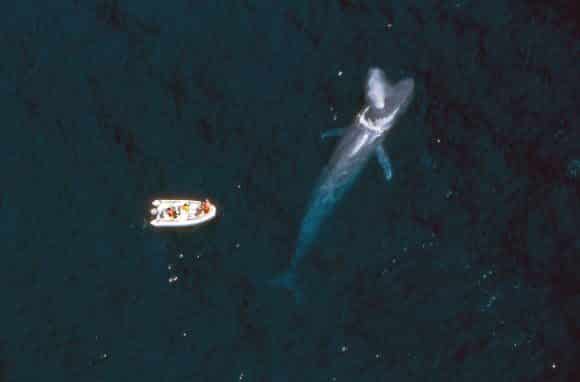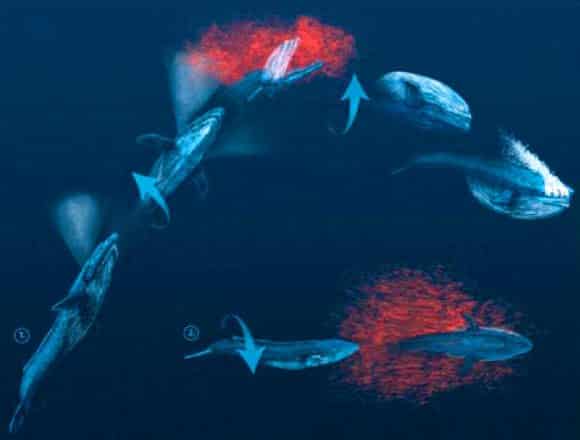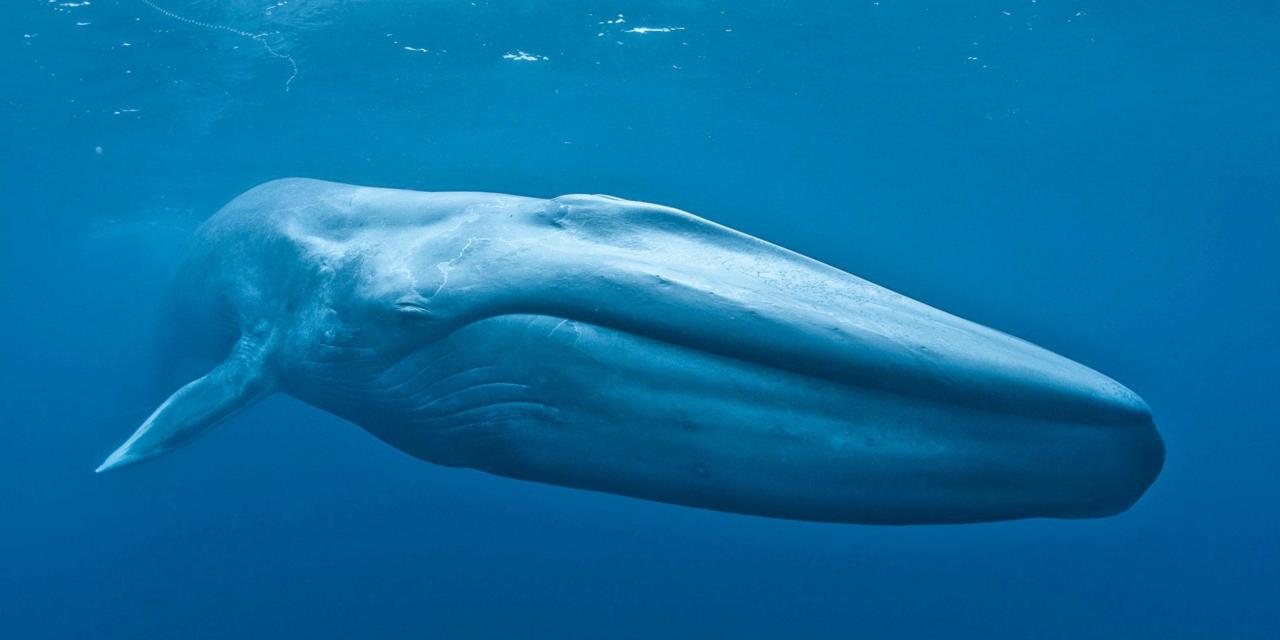Blue Whales Act like Lefties While Diving for Foods
Whales are some of the most majestic creatures on the planet. Their sheer size is enough to capture our imagination, but they also happen to be among the most intelligent animals in existence.

When humans eat, they typically use one hand or the other to shovel food into their mouths. Most of us- about 85 percent- defer to our right hands for this task and other motor activities, like writing, waving and handshaking. Scientists call this preference for one side or the other lateralization, and it’s thought to aid in the brain’s efficiency.
Blue Whales are no exception to this one-sidedness according a new research.
The study adds a surprising new detail to the marine mammals‘ underwater ballet: They don’t spin and turn at random. Instead, the 80-foot-long giants show a preference for either their right or left side—the equivalent of handedness in humans.

The lunge feeding of blue whales is an extraordinary biomechanical event in which the largest animal on Earth accelerates and opens its mouth underwater, expanding its enormous throat pouch to engulf a huge volume of water, then filtering out its prey (small crustaceans called krill) by forcing the water through sieve-like baleen plates.
“It’s very costly energetically, but it’s also very efficient because they get a lot of prey at once,” said Ari Friedlaender, a researcher at the UC Santa Cruz Institute of Marine Sciences. Blue whales are “the ultimate example of efficient feeding,” he said. Although energetic costs increase with body size, so does the efficiency because a larger mouth can process more water.
Dr. Ari Friedlaender, lead author of the study and a researcher at the University of California, Santa Cruz, and co-authors attached motion-sensing tags to 63 blue whales to capture how the animals move as they engulf their prey.
In total, the team collected data on 2,863 rolling lunges for prey to find that the animals approach their prey using two different rolling behaviors.
In some cases, they roll to the side and then back, turning 180 degrees or less. In other cases, they go in for a complete barrel roll that takes them around full circle.
The evidence shows that individual whales have a preference as to whether they roll to the right or the left.
The vast majority of the whales showed a preference for rolling to the right, much as more people show a preference for using their right hands.
But, the whales also showed some flexibility in their approach. When the animals did a barrel roll in shallow water to attack a small patch of prey from below at a steep angle, they more often spun left, going against their general preference.
By rolling to the left, the whale orients its right eye toward the surface and toward the prey it is trying to target. But what makes the right eye better than the left eye for targeting prey? That has to do with the wiring of the vertebrate nervous system and the specialization of the brain’s left and right hemispheres.
The optic nerves that carry visual input from the eyes to the brain run contra-laterally, so the right eye connects to the left side of the brain and the left eye to the right side. The performance of routine actions is controlled predominantly by the left side of the brain, so the right eye provides more direct input to the control center than the left eye. According to Friedlaender, that seems to make enough of a difference that rolling to the left enables more efficient feeding than rolling to the right.
“The movements involved in targeting prey have to be coordinated, and when you think about how big a blue whale is, these are massive movements that take a long time to execute,” Friedlaender said. “These are not squirrels racing around, they’re the biggest animals on the planet.”
The smaller rolls to the right when feeding at depth probably relate to the biomechanics of opening the mouth rather than visual targeting of prey, he said. The predominance of rolls to the right at depth, like the preference for the right eye in targeting prey at the surface, probably reflects the left-brain control of routine actions. Such lateralized behaviors are found throughout the animal kingdom, but scientists still do not fully understand the reasons for them.
The tendency for a right bias could go back to the common ancestor of all mammals, and even before then. Friedlaender said that the bias is ubiquitous even in “vertebrate groups that are far more primitive or older than mammals.”
It can be challenging to accomplish tasks that go against one’s inherent lateralization. Consider the awkwardness of a right-handed person forced to wield a pen in their left hand, or vice-versa for a leftie.
Given the challenges of studying the largest animal that has ever lived on Earth, scientists are unclear if blue whales are more flexible than other animals in switching from right to left preference. Perhaps, even with their right bias, they are more ambidextrous than previously thought.
“By understanding the context surrounding when whales behave in certain ways we can better understand the impact of disturbance to these animals both when it occurs, but in a chronic sense too, over time,” Friedlaender said.
“If the whales were forced, over time, to feed in less quality prey patches and have to expend more energy doing so, this would likely impact individual animal fitness and eventually lead to decreases in growth rates and reproductive rates,” he added.
The researchers next hope to investigate whether or not there are asymmetries in the bodies of blue whales that would make it more challenging for them to roll to the left based on their anatomy.
“We are just stretching the surface of what we know about how whales make a living in the ocean,” Friedlaender said. “But by combining new technology with our questions, we can begin to better understand how these animals behave, what they need to survive, and how human impacts in the ocean — such as sound — affect these animals.“






























